LP12MF Listening Test: Naim Aro and Greenstreet Subchassis
In the latest edition of the LP12 Modification Frenzy, I put the Dynavector XX-2 cartridge onto the legendary Naim Aro tonearm and mount them on a Greenstreet subchassis. You can read about the process of installing the Aro here. You can check out my listening methodology here. Full listening impressions are below. Digestible, numerical summaries of all my listening tests are here.
tl;dr
I’ve wanted to try an Aro forever.
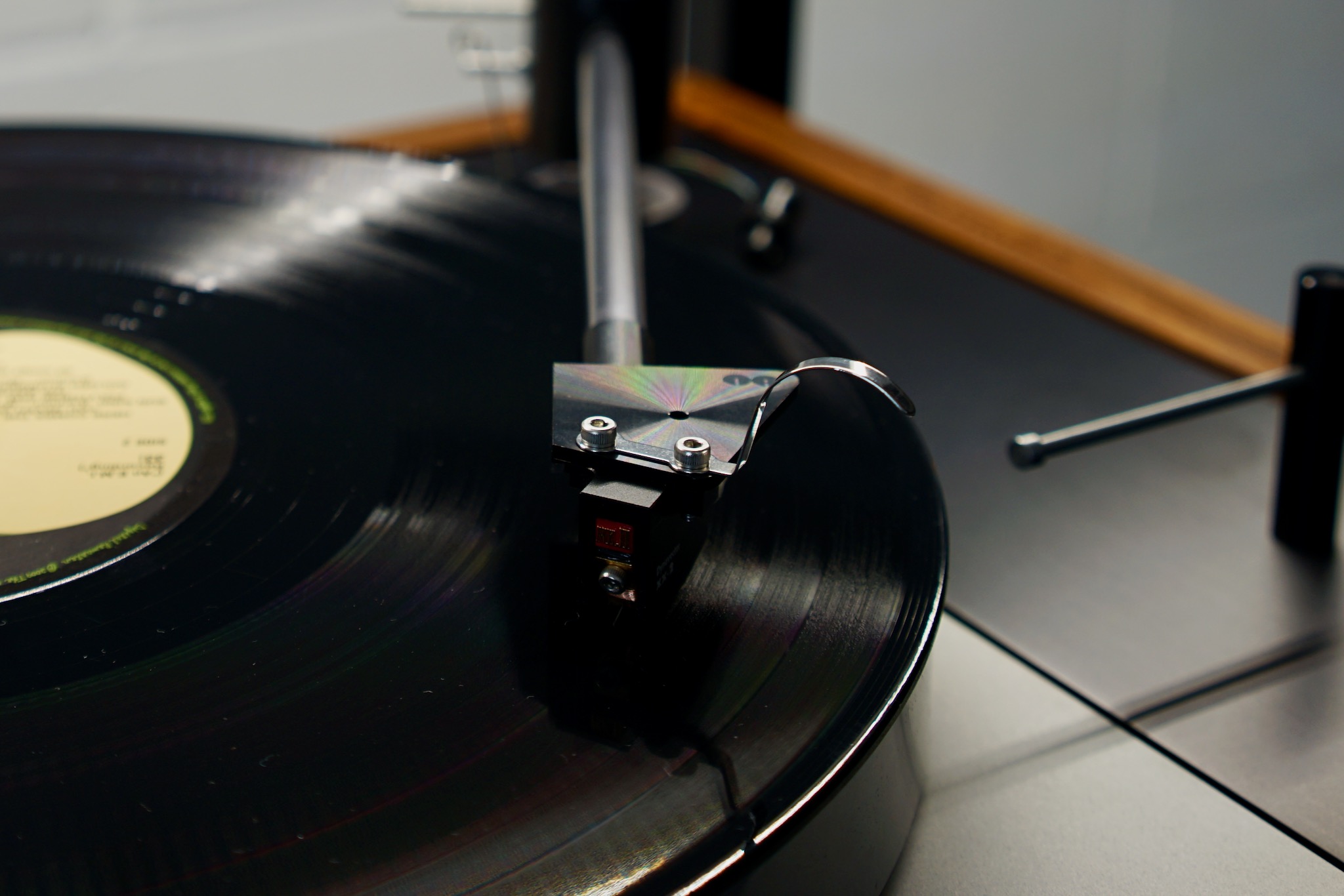
Despite not having ever heard a single Naim product, I became a bit obsessed with them in my teenage years in the 90s — it was probably the glowing green logos, the cute shoebox cases, and the fact that they were British, at a time when I was definitely experiencing some very strong anglomania. (No accident that I went straight from high school into an exchange program in England.)
I’ve certainly lusted after Naim amplification, but it’s always been the Aro I was most obsessed with. The name “Aro”; the unfathomably elegant shape; the minimalism of a unipivot design, and of no cueing mechanism… It’s always had a kind of avant-garde modernist feel about it: daring, bold, stark, beautiful, slightly confrontational.
Also, expensive. These were produced in small batches and made to exacting tolerances. Until very recently, I simply couldn’t afford one.
I’ve definitely dipped a little further into my savings to carry out this LP12MF, but I’m a sucker for a concept, so once I got started, it was hard to stop. I had a Nima (anagram of Naim), so I had to try the grandaddy of unipiviots. When I saw a Tiger Paw Javelin for sale, needed to try a super-Aro. And I couldn’t just look at unipivots, if I was being properly comparative, so I also needed to try an Ekos…
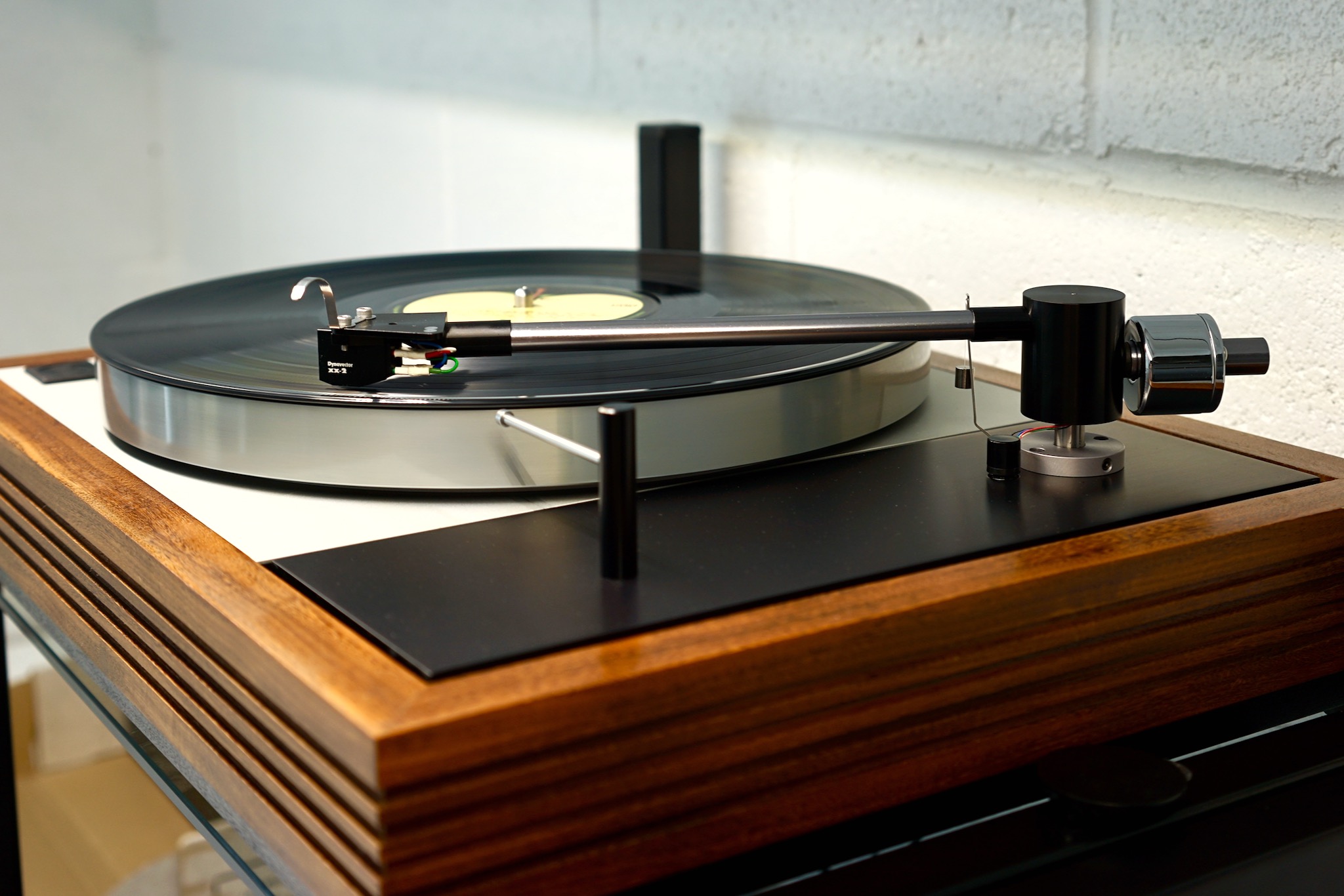
Anyway, my tonearm journeys are at an end. I’ve tried some very fine tonearms, and I’ve picked my favourite. It’s not the Aro, alas; it’s the super-Aro (aka, the Javelin).
Here’s what I was expecting the differences between the tonearms to be, based on obsessive reading of forums over the last several decades. I thought the Ekos would have tons of slam, heft, and dynamics, but lose out on texture, timbre, and “naturalness” to the Aro. I figured the Nima would be like the Aro, but with a little less of its texture, timbre, and naturalness. I though the Javelin might be a sort of happy medium, with all the virtues of the Aro but a bit more slam and heft.
This wasn’t a million miles off, but the Javelin was simply better than I expected it to be. It has all the heft and slam of the Ekos, and then some. It has all the “naturalness” of the Aro, but with added snap, sparkle, sizzle, and zing. I’ve found it a comprehensively better arm than any of the others. I rated the Aro + Greenstreet 6.25% worse than the Javelin + Mober subchassis, 10% off the best I’ve heard (Javelin + Troika) — and about 5% worse than the equivalent Ekos 2 combination (though I’m not sure about that one — my audio memory of the Aro suggests it’s about equal to the Ekos 2, though different.)
As you’ll see in the notes below, after listening for months to the Ekos and (especially) the Javelin, the Aro felt a step or two behind in terms of drive and sparkle. It had noticeably less slam and heft. Kick drums in particular just didn’t have the impact they did on the Ekos or (especially) the Javelin. On the higher end, the was less of the “zing,” “splash,” and “snap” that I so enjoyed when the Javelin came into the system.
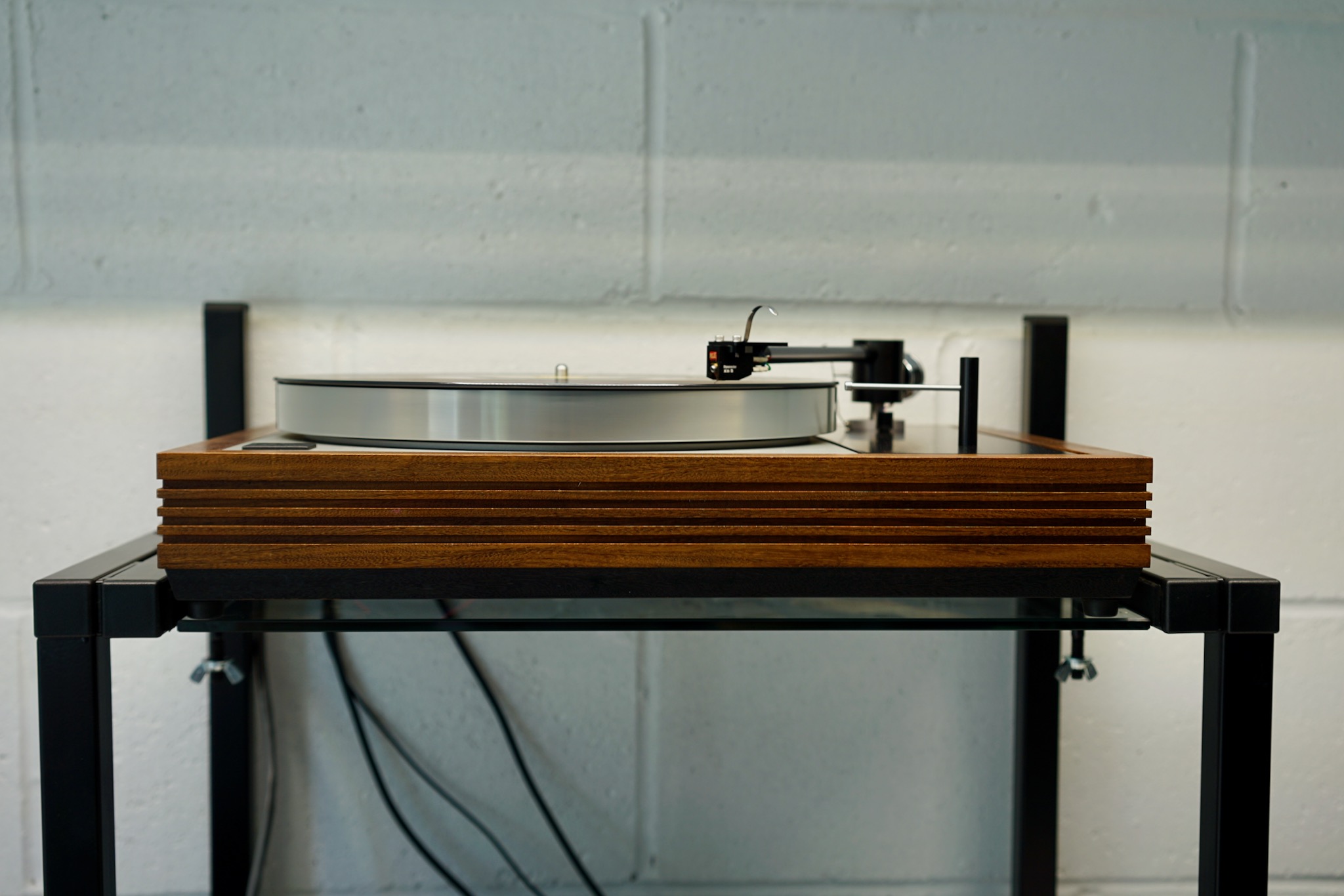
This isn’t to say that I didn’t enjoy the Aro. It is indeed great at textures — much better than the Ekos, exactly as its reputation suggests. (I’d have a very hard time picking between the Ekos and the Aro, but I’d probably take the Aro in a bind, just because of how much cooler I find it.) The Aro is amazing with delicate, filigreed sounds like cymbals, and acoustic guitars and female vocals sounded as good with the Aro as I’ve ever heard.
But I wouldn’t describe its presentation so much as “natural” as “euphonic”: music sounded terrific, was extremely listenable, but it was lacking in bite and drive, and was in general a bit soft.
(Interestingly, this wasn’t the case with one of my main “slam” tracks, Dungen’s “Panda,” but drove like crazy and had amazingly driving bass. I can’t quite explain why…)
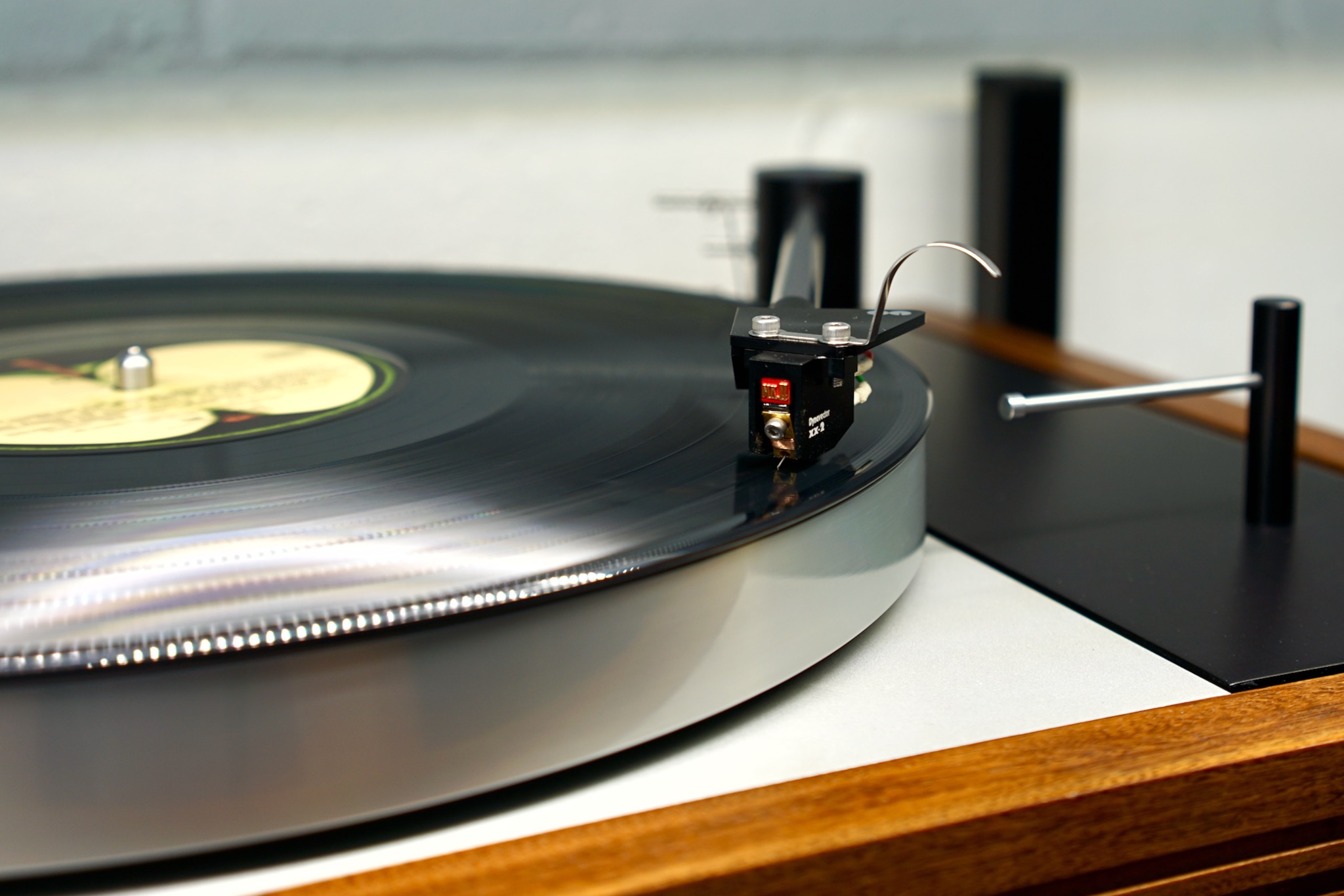
There is, of course, a major caveat to all this: I didn’t get to listen to the Aro with my favourite cartridge, the Linn Troika. Instead, I needed to listen with the Dynavector — which I found a little too soft for my liking on other arms, and which I described as overly “smooth.” So perhaps the Aro would have come to life with the much snappier Troika. Alas, it’s not a combination I was able to test.
Why not? Keep reading.
Why I couldn’t use the Troika with the Aro
The Aro is famous for a few things, as I’ve already noted.
Its somewhat extreme, polarizing aesthetic.
Its lack of a cueing mechanism, so that you need to manually cue the stylus onto and off the side.
And its lack of any cartridge adjustment screws.
I’m 100% onboard with the first; for me, the Aro is the most beautiful component in the history of hifi.
The lack of a cueing mechanism just wasn’t an issue for me. I had no problems whatsoever using the Aro’s (incredibly gorgeous) finger lift to get the cartridge in and out of the groove.
But the fixed headshell screws are annoying.
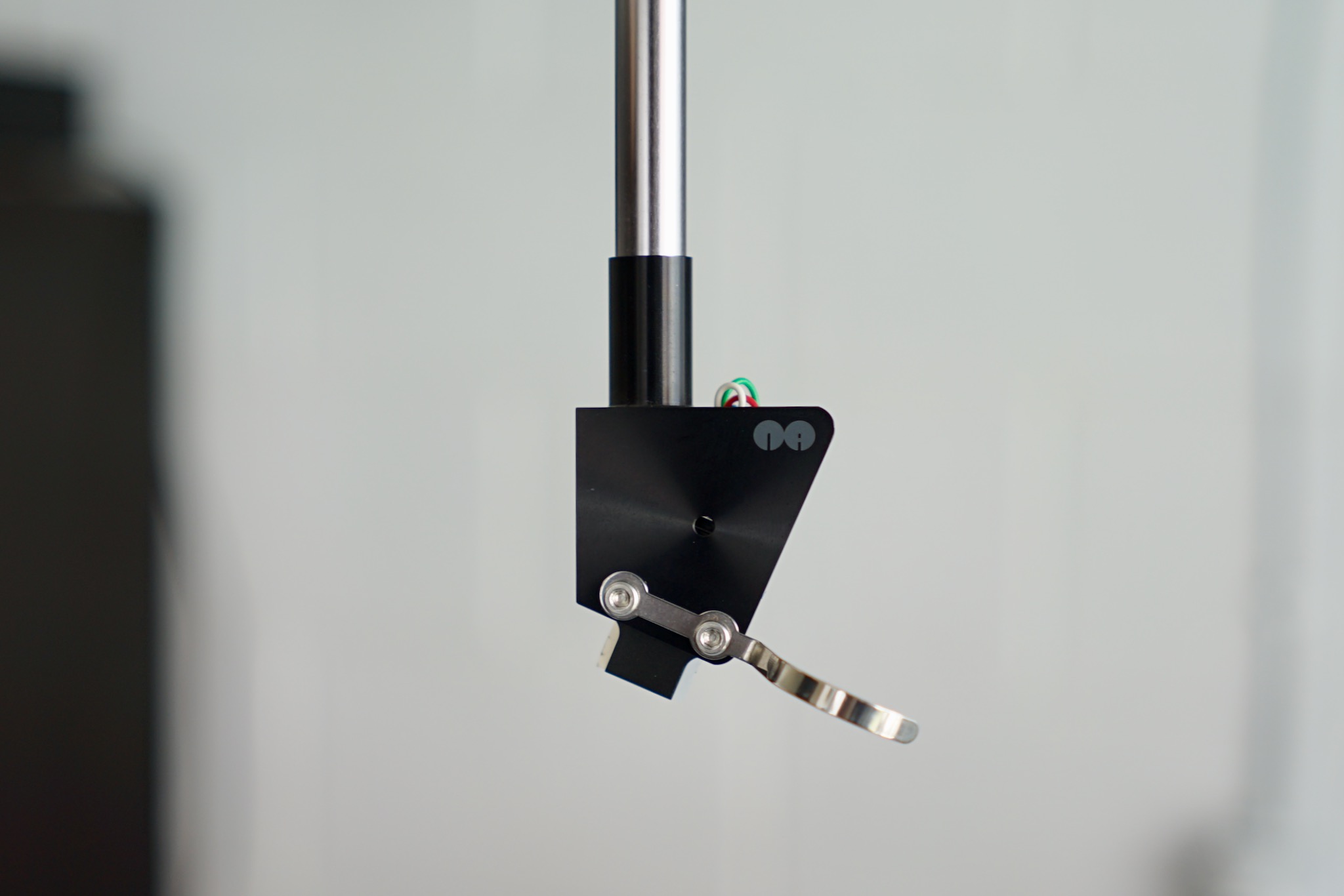
You can see why Naim wanted to use them. They make the headshell very rigid, which seems like a very good thing. And in the olden days of two-piece pressed steel subchassis + MDF armboard arrangements, you could slightly alter the pivot-spindle distance just by adjusting the position of the screws at the interface.
In the era of one-piece subchassis/armboards, however, spindle-pivot distance is fixed. In combination with the Aro’s fixed headshell screws, this severely restricts you choice of cartridge. (One of the things I like best about the Tiger Paw Javelin is its offset main bearing pillar, which allows for adjustment without resorting to a slotted headshell.)
Then there is the question of the precise pivot-spindle distance a particular one-piece subchassis/armboard is set to!
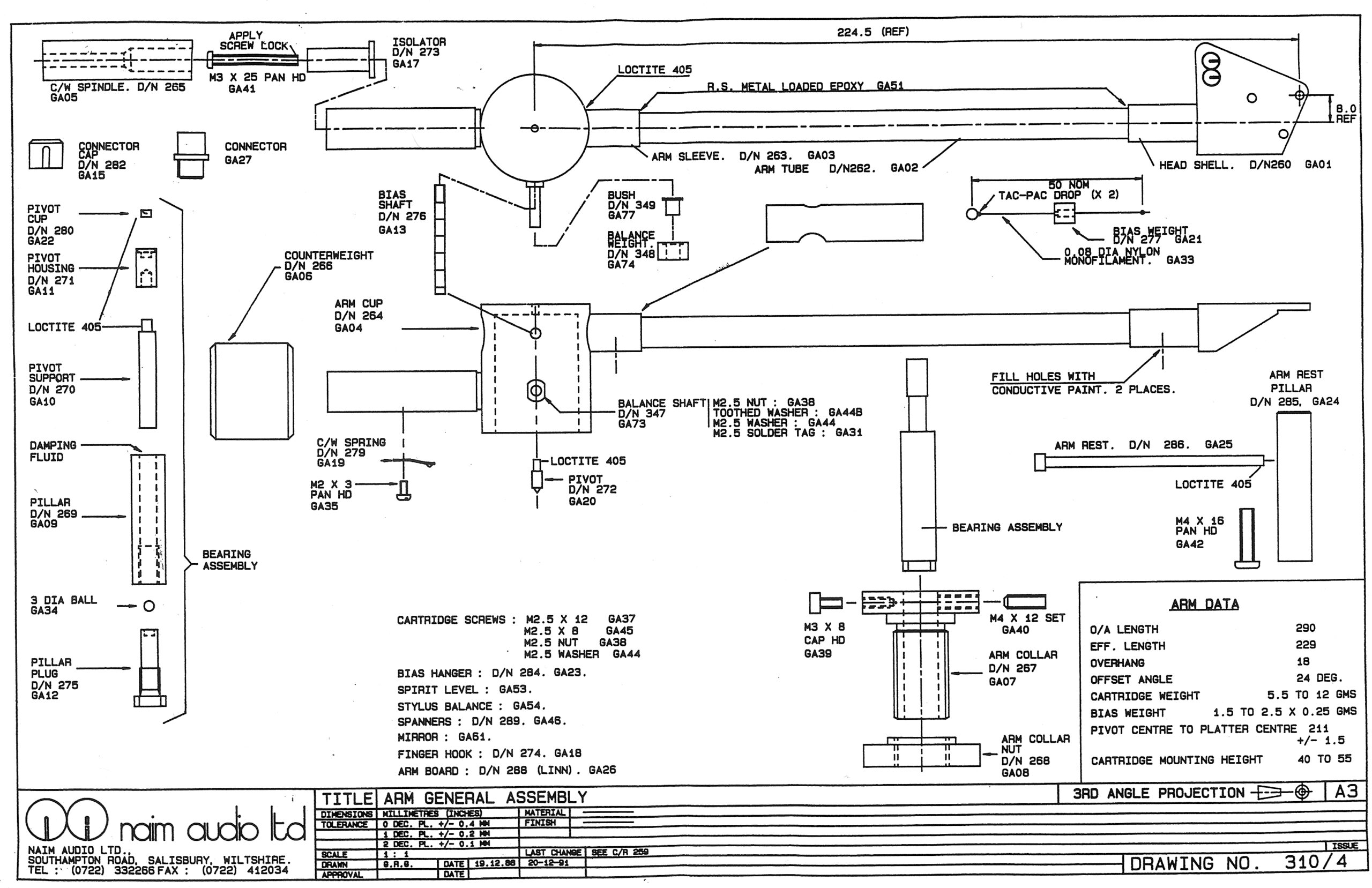
In their documentation for the Aro, Naim specified 211mm +/- 1.5mm. That wiggle room was to allow you to adjust the interface point of the steel subchassis and MDF armboard, and use a variety of cartridges.
Modern Linn subchassis (the Keel and the Kore) as well as third-party subchassis like the Mober all use a spindle-pivot distance of exactly 211mm. As I learned from reading (and participating in) threads like this one on AudioFlat and this one on pfm, in practice this means that you need a cartridge with about an 8.25mm distance from the stylus tip to the centre of the mounting bolts.
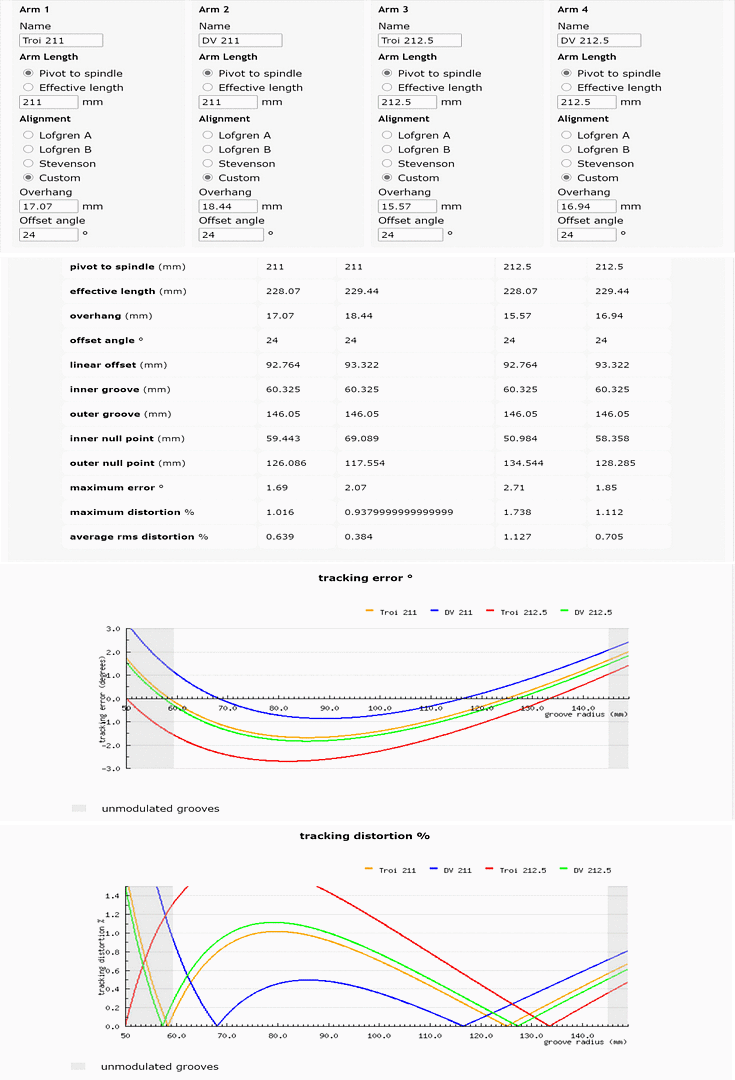
But that’s a pretty unusual distance. The Linn Troika — the cartridge for which the Aro was designed — is 7.5mm, so you get good alignment, but not ideal. Dynavector cartridges are 8.5mm, so you get very close to ideal. A cartridge like a Lyra uses 9.5mm, so not great. An Audio-Technica is 11m, so really not smart to use.
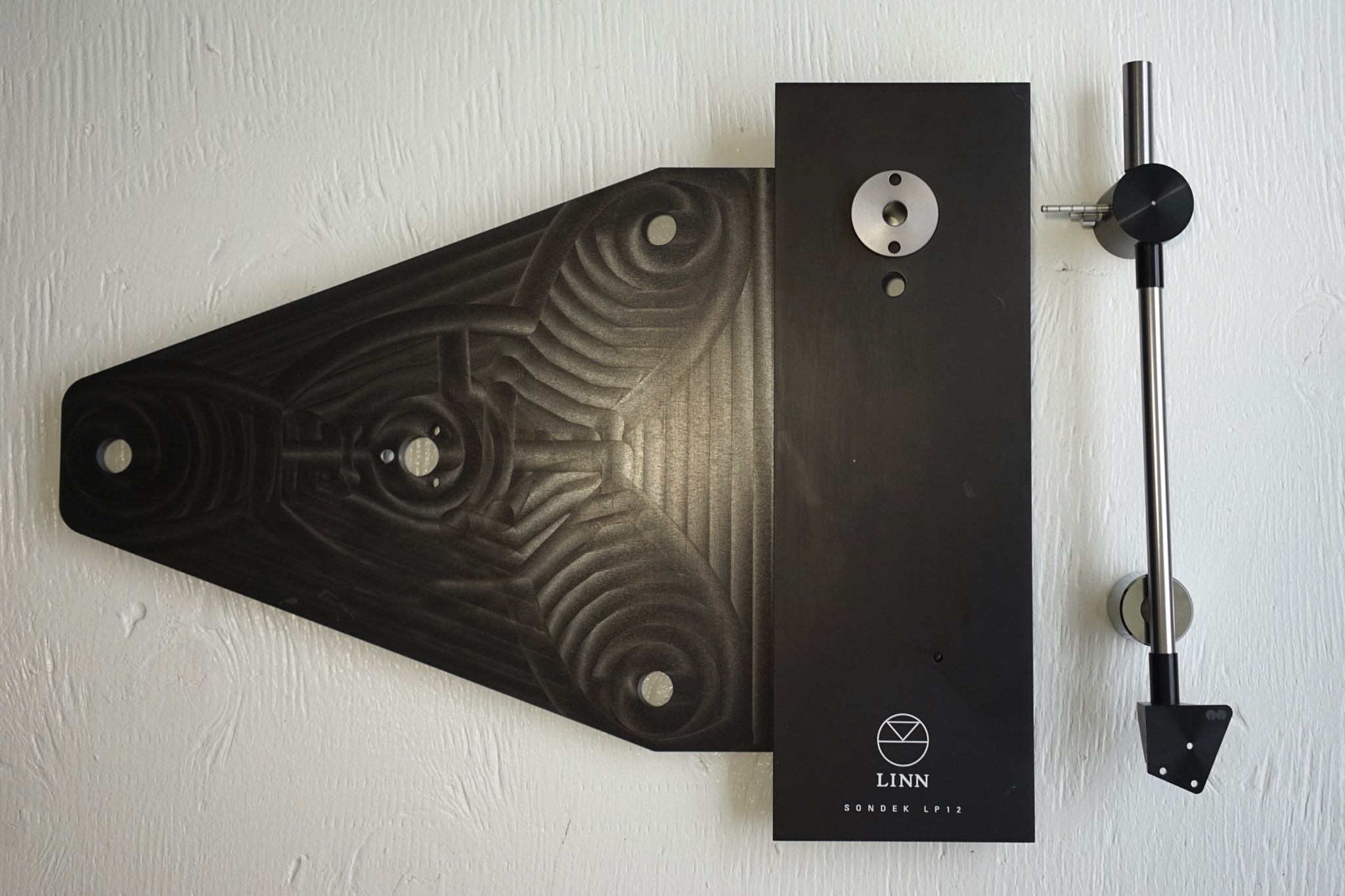
But the Greenstreet doesn’t use 211mm. For some reason, they decided to max out the 211 +/- 1.5 and go with 212.5mm. This means the Troika is really not very well aligned on the Aro on a Greenstreet — which is why I didn’t try it. My Dynavector XX-2 is pretty close, but still not ideal.
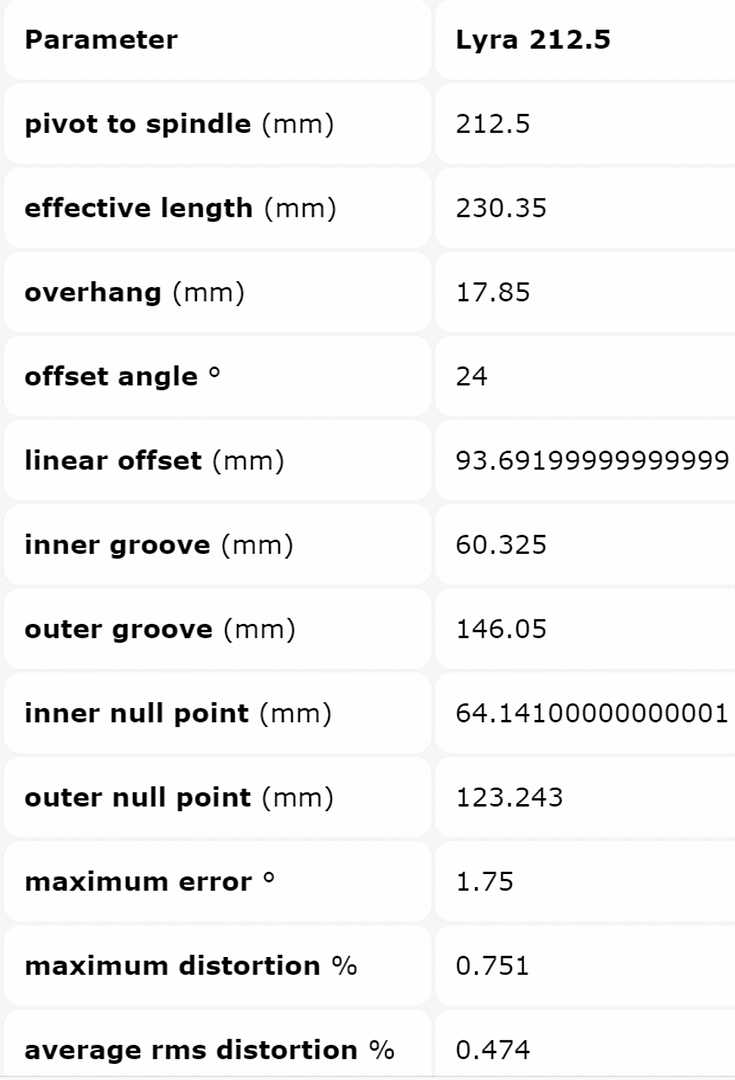
I wish I had a Lyra cart, because they’re just about perfectly aligned on a Greenstreet.
Anyway, our takeaway from all this should be the following: I didn’t get to hear the Aro with my favourite cart, and the cart I did listen to — the Dynavector XX-2 — was still not an idea match for the Aro/Greenstreet geometry.
So the Aro never really got a fair shake.
But it also didn’t make it easy to give it a fair shake 🙂
Notes on casual listening
I listened to lots of music with the Aro installed — but absolutely none of it was on headphones, other than the test tracks listening below. All other listening was in my developing “Garage System.” For the duration of the Aro’s time in my system, the chain was LP12 –> Dynavector P75 –> Naim Nait 2 –> Yamaha NS-1000M. It sounded really, really good — but not in a way I could compare to previous rounds. So the notes below are much more useful.
Test tracks
1. The Beach Boys, “I Know There’s an Answer,” Pet Sounds (1966)
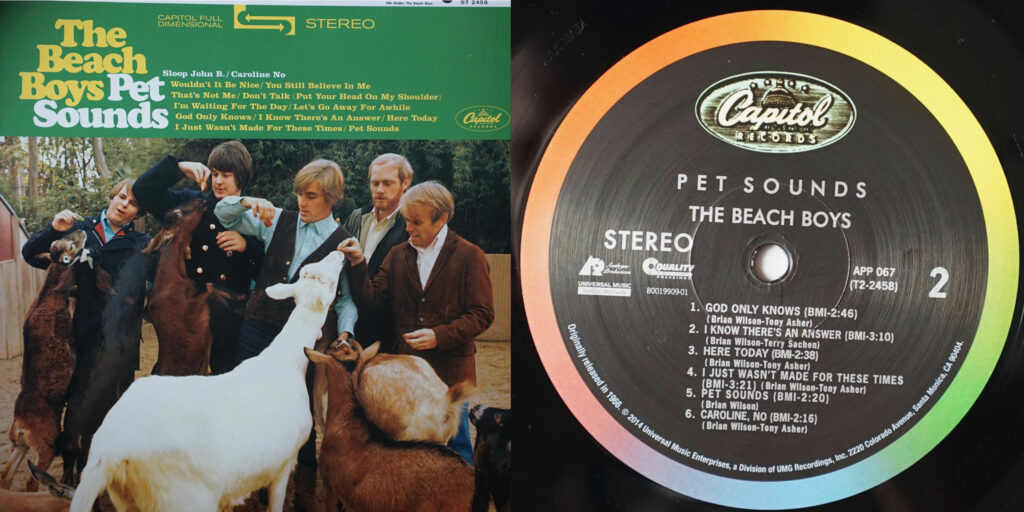
Full digital. So I’ve ONLY listened to music out in the garage, on loudspeakers, for the past two weeks. No headphones, no time at all in the office system. So this sounds interesting — there’s fuller bass, which I like, but the shakers do not sound good, not does Brian Wilson’s voice sound like anything special. The loudspeaker setup (current LP12 —> P75 —> Nait 2 —> Yamaha NS-1000M) is much better with natural textures on every intstrument represented here. Indeed, I’ve really been enjoying this very record on the loudspeaker setup. I was sort of expecting to come back to the headphone setup and be blown away by the detail on offer. But… no. Not with digital, anyway.
Full vinyl. A lot better, way more authority on the bass. A little soft on the top, maybe? Lacking a bit of slam on the timpani? I do feel like I’m missing some slam here, for sure. But I’m loving the textures, especially on the bass harmonica.
Slight delay. Definitely still a massive difference here. Much, much more natural, amazing textures on vinyl. Harshness, glare from digital. Definitely, though, what it’s lacking is just a little bit of slam. So we’re well off the best of vinyl here, I’m afraid.
S-2-s. Hmm, well, this is as good as I’ve heard the shakers sound on vinyl — delicate and beautifully floating in the soundstage. But wow, on the slam, just not as good as previous rounds. The digital sounds nearly as good on the timpani as vinyl — and it’s been a really long time since I’ve been able to say that. Brian’s vocals are way, way nicer and smoother on vinyl; they’re positively metallic on digital. And the vocals have a nice little halo of reverb around them on vinyl. The little ukulele or whatever during the bass harmonica part is much better defined on vinyl. But I’m missing a little bit of sparkle on the outro shakers, too. We’re down to about 35% here.
Verdict: vinyl is 35% better (10% regression)
2. Charles Mingus, “Track B — Duet Solo Dancers,” The Black Saint and the Sinner Lady (1963)
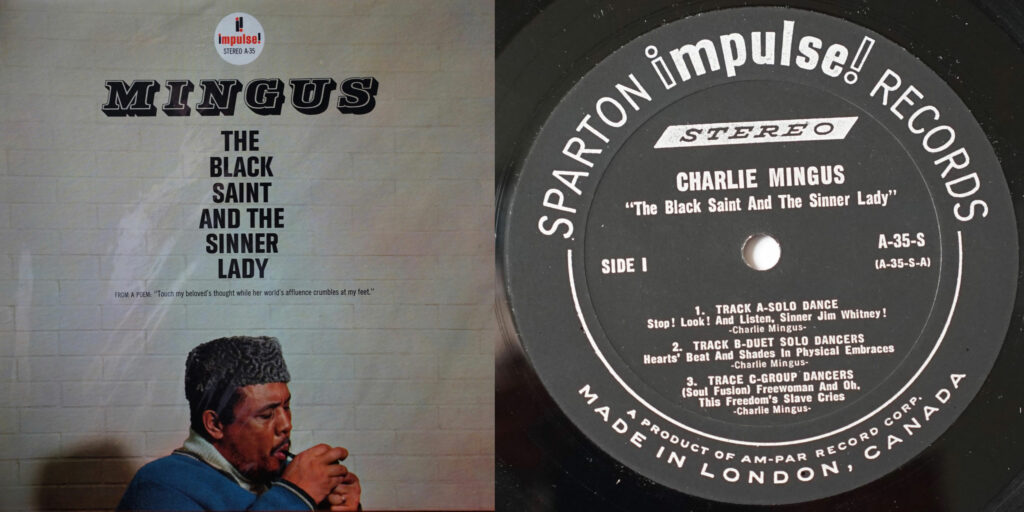
Full digital. A track I know all too well. Weirdly panned, no centre. Lots of drive but screechy and just wrong.
Full vinyl. This one sounds really nice. Yep, smooth, wide, with the brushed snare in the centre really soft and wide. Very nice on the “buh-buh-buh-buh-buh,” but not the best in terms of slam or force I’ve heard from vinyl. The smoothness, the rendering of space, and the textures on the delicate cymbals are up there with the best, though. Cordy sax is stellar too.
Slight delay. Vinyl is coherent, smooth, presented in an engaging way. Digital is hard to listen to: harsh, with no width, with everything mushed together, with much less convincing textures. All I’m losing is some clarity and heft on the low end.
S-2-s. A step back, too, in resolution and focus, I think. Really engaging, really in focus, really nice: but could use a wee bit more force and lacking a little bit of “splash” and resolution.
Verdict: vinyl is 35% better (5% regression)
3. The Pentangle, “Let No Man Steal Your Thyme,” The Pentangle (1968)
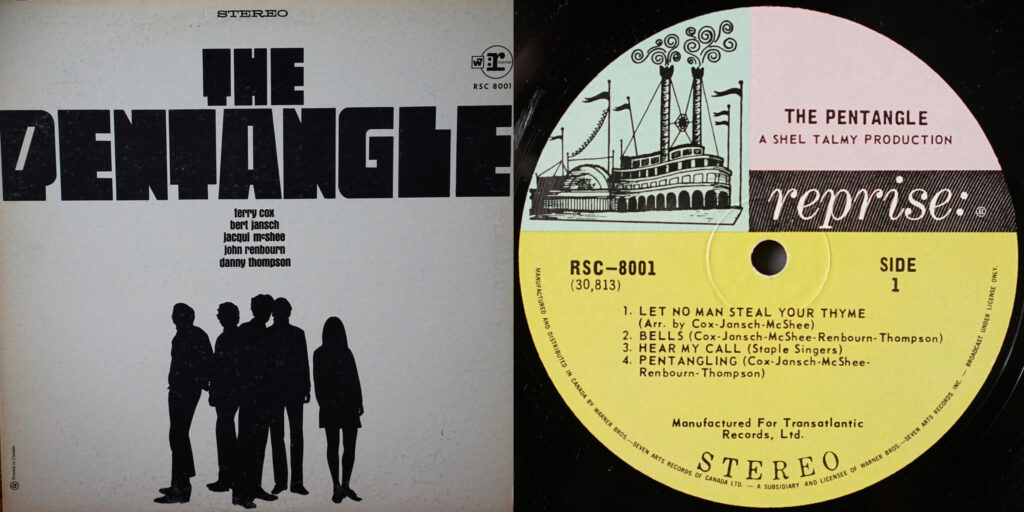
Full digital. Really enjoying this quite a bit, with Jacqui’s vocals clear, the acoustic guitars full of spring, and the triangle and rim hits nicely defined. Bowed bass is pretty good, too…
Full vinyl. Clearly livelier acoustic guitars, bass, and snare. But Jacqui’s vocals are foggy — a shortcoming of this pressing. Really, really nice acoustic guitars in the breakdown, though — a lot of the springiness and spaciousness I like best, and then tons of impact on the triangle and rim hits. So pretty stellar in all ways, except the focus on the lead vocal.
Slight delay. Hmm, on direct comparison, vinyl has a nice edge over digital for clarity of vocals. Incomparably better in rendering softer details like the quiet drumming on the right channel. Vinyl a totally engrossing cloud of sound (soundcloud?) and digital, well, the same notes, but so chalky and confused. Vinyl does get a little foggy on vocals right at the end. Digital isn’t foggy, but it is hollow.
S-2-s. So so so much nicer on acoustic and vocal textures on vinyl. Just totally right. Taking something off the top, making it more pleasant and smooth and listeninable, also more real. Vinyl is amazing on sharp details in the breakdown — they’re totally in focus — but does lack kick on the bass drum. So, like last time, the presentation on vinyl is definitely “smooth” and very euphonic — and the detail is terrific on sharper sounds — but just missing a little force on kick drums.
Verdict: vinyl is 25% better (no change)
4. Mariah, “Shinzo No Tobira,” Utakata No Hibi (1983)
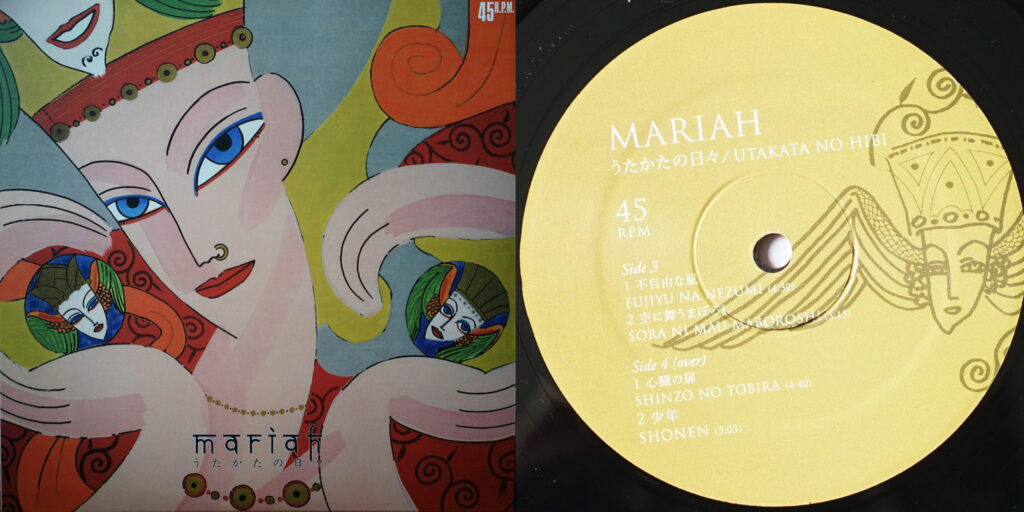
Full digital. What a weird track. Strikes me as pretty good tonight. Ah, but I see, yes, as I continue, the shakers have no edges, the bass is present but strangely blunted. Vocals decent but not really soaring like they can. Synths definitely nothing special.
Full vinyl. Much less bass impact than with the Javelin. The extra kick I was getting with the Javelin — like a second drum pedal striking — is gone here. Even the shakers aren’t particularly defined. I think the loss of bass impact is blunting the effect of the whole track here. I mean, there is still a lot of bass impact, and more than digital, but not what I’ve become used to with the Ekos and the Javelin.
Slight delay. Ah, but in direct comparison, the Aro is amazing in rendering the vocals — rich and full and really soaring. Like they’re glowing, lit up. Synths are nice and squishy, three dimensional on vinyl, flat and lifeless on digital.
S-2-s. I just needed to turn the vinyl up a little more to see what it had to offer versus digital — with everything louder, the differences are clear. It’s a richer, more “glowing” presentation. But yes, it once again lacks some kick.
Verdict: vinyl is 30% better (5% regression)
5. Joy Division, “Atmosphere,” 12″ single (1980)
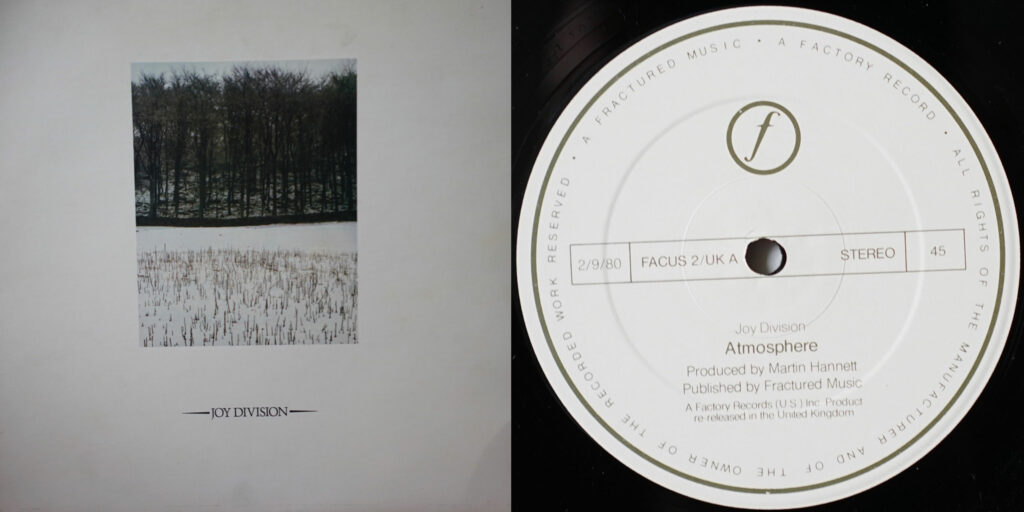
Full digital. Quite good impact on the toms. Not an overwhelming experience, but also a bit hard to locate obvious faults with it.
Full vinyl. Definitely getting the “Aaaahhh” feeling on the toms: impact, sharpness, hand drums in really nice focus. The kick drum has real force here.
Slight delay. Just not the same impact on the toms on digital — not close. The extra little bit of slam, impact, force is what you spend all this time looking for — that and the clarity, the little halo of liveliness around the hand drums, of the sense of depth on the synth wash. I thought this track might lose a bit to the Javelin on slam, but it doesn’t seem to have. Very good with the Aro here.
S-2-s. In second to second comparison, it’s clearer that we’re not at the best levels of “slam” here. It’s a lot better than digital, but not trouncing it like in previous rounds. A lot of heft and detail, but maybe a bit less zing, sharpness compared to the Javelin’s presentation. Clearest differences are the usual two: drum heft (though more the kick than the toms) and the hand drums. They’re warmer, softer, but also better defined on vinyl
Verdict: vinyl is 25% better (no change)
6. Low, “Just Make It Stop,” The Invisible Way (2013)
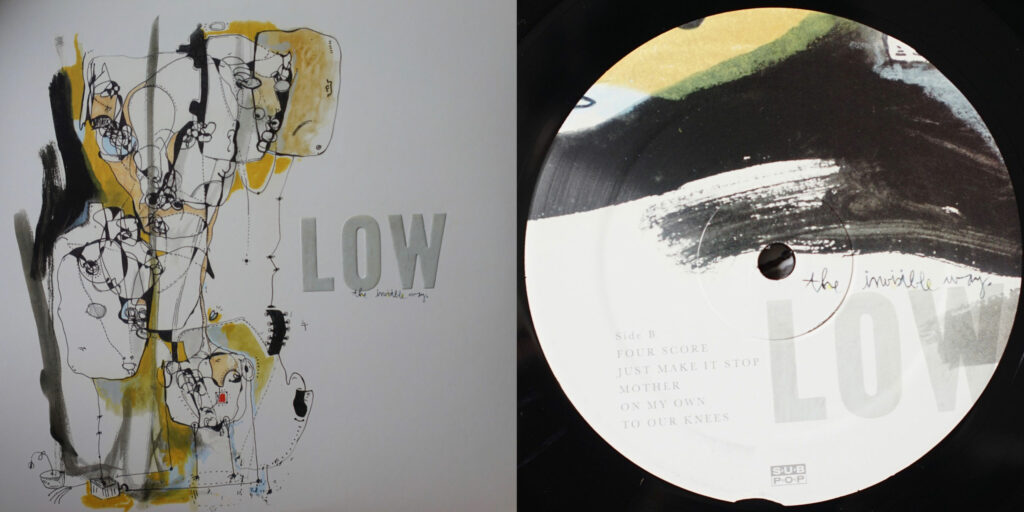
Full digital. This very inconsistent track is having one of its good nights, with lots of depth and width and decent cymbals that, sure, are a bit tizzy but could be a lot worse. The deep guitar and piano on the borders have lots of impact and force.
Full vinyl. Okay, yes, the cymbals are much more delicate, with a much wider corona of splash, than on digital. And Mimi’s voice is in nicer focus, consistent with last round. The cymbals are the main difference: I’m not getting much more bass, or more bass control, than I was with digital.
Slight delay. Just a layer of sludge of everything on digital. Not a huge layer, but it blankets the presentation, takes away the sharpness and fineness.
S-2-s. Vinyl has again lost a little something here: force, drive. Delicacy, clarity, but not the heft on the edges, or the force during the barroom piano. Down a few notches.
Verdict: vinyl is 20% better (10% regression)
7. Yo La Tengo, “Stockholm Syndrome,” I Can Feel the Heart Beating as One (1997)
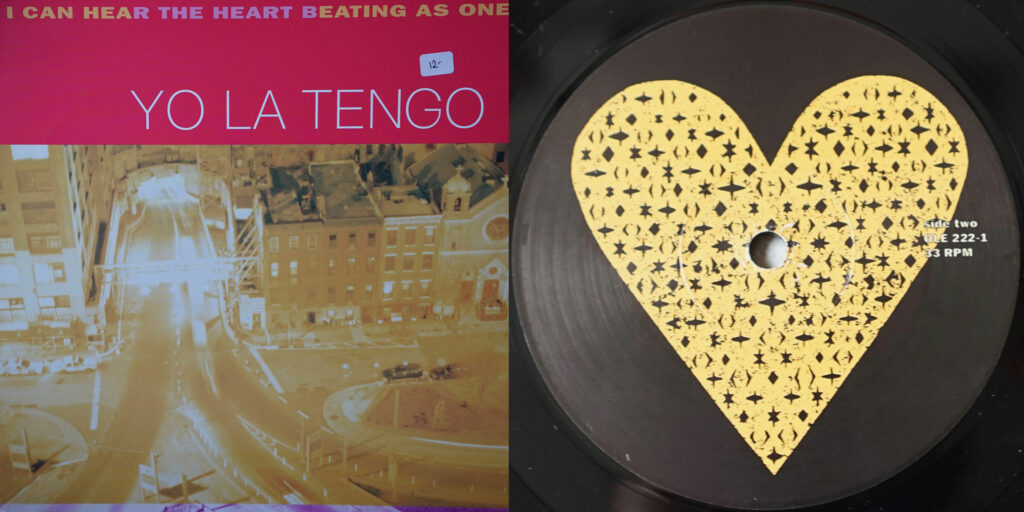
Full digital. A bad night for this track. No snap to the acoustic guitars, James’s voice sounds wispy and distant. Drums have no life.
Full vinyl. Lots better. More snap on the acoustic guitar, more drive on the bass, more life on the drums, more focus on James’s vocals — really, really nice.
Slight delay. Vinyl is definitely doing a very nice job with the acoustic guitar here and the snare snap — much more to dig into here aurally on vinyl. Extremely bland on digital. Not quite at the “blazing column of sound” level that vinyl one enjoyed, but way better separation of instruments and textures on vinyl than digital. So nasal and narrow on digital. Juicy and alive on vinyl.
S-2-s. The Aro is definitely handing this really well. Especially noticeable in the opening and closing parts of the song where the instrumentation is relatively spare. Texture, drive, snap — really good, just as good as last time.
Verdict: vinyl is 30% better (no change)
8. The Beatles, “While My Guitar Gently Weeps,” The White Album (1968)
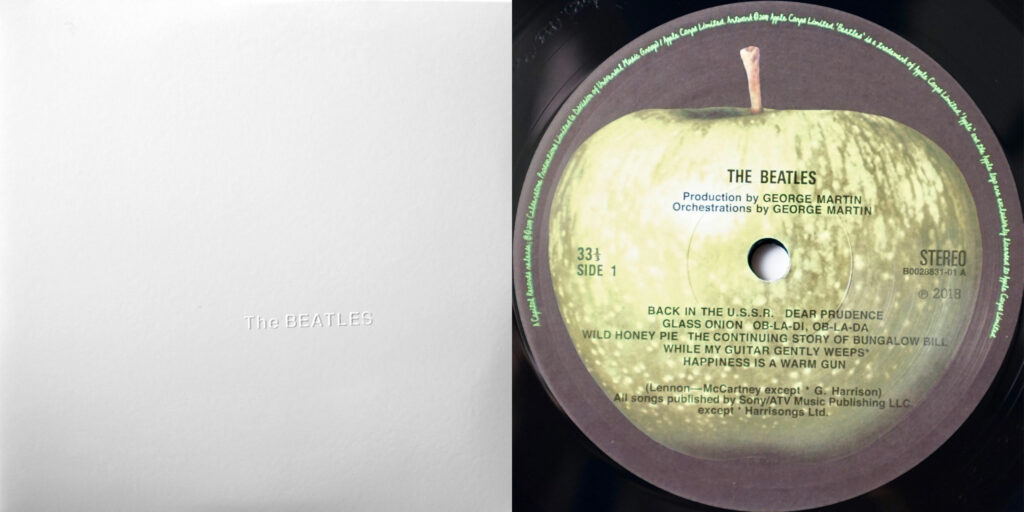
Full digital. One of my most consistently nasty digital tracks is its usual harsh, overly bright, unpleasant self. I can barely hear the acoustic guitar.
Full vinyl. There’s the acoustic guitar. There’s George’s voice, totally in focus. There are the clippety clops — and there is Paul’s bass! Sometimes the bass and kick drum could be a little overwhelming, including with both the Ekos and the Javelin. Really fun, but a bit much. Seems like just the perfect amount of bass here. But could maybe hit just a little harder.
Slight delay. The Aro/XX-2 presentation is smooth, it’s euphonic, it sounds really nice and you want to keep listening. It takes away the harsh, grating quality of the digital presentation and adds a lot of bass kick. I’m not getting a whole lot more detail versus digital here, though, or that feeling of the musicians in the room. I’m mostly just getting “smoother” and “more bass kick” (which is sort of counter to the Aro’s performance to this point, really…)
S-2-s. Really nice, much better than digital, but a little too smooth for me. I’m missing some of the zingy impact I got on Paul’s outro bass in previous rounds.
Verdict: vinyl is 25% better (10% regression)
9. Dungen, “Panda,” Ta Det Lugnt (2004)
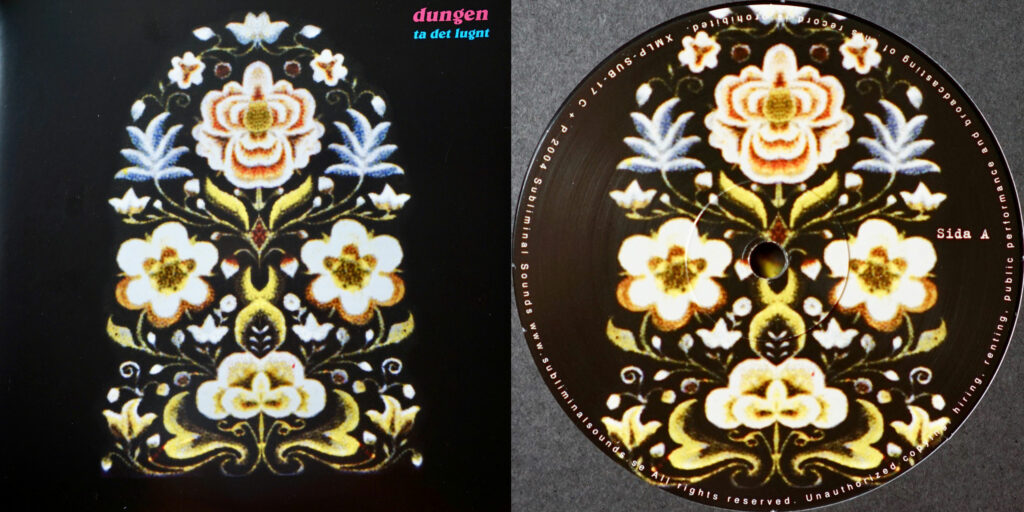
Full digital. Unlike last time, this isn’t impressing on digital tonight. It sounds flat, restrained, and slushy. And it should really sound astoundingly good.
Full vinyl. Miles better. Space, slam, roundness, shimmer — so good. I’m not getting the amazing presence of vocals I was getting last time, but the guitars are super thick, the detail is amazingly precise (fingers sliding up roundwound guitar strings), you can feel the bass strings being plucked. “Thick” guitar comes through very well, there’s plenty of bass — but I don’t think I’m quite getting the same amount of slam as I was getting with the Javelin. Excellent, though.
Slight delay. Vinyl just absolutely destroys digital tonight. Digital is tight, sharp edged, lacking in thickness, vinyl is powerful, thick, forceful, packed with detail. Was there a bit more drive with the Javelin? Was I feeling the bass guitar a little more (DEE do DEE do DEE do)? Probably. But my subjective sense of enjoyment and excitement here is as high as ever. Amazing.
S-2-s. Wow, I got the timing exactly right, and the volume level was exactly the same, so I REALLY got to hear the differences. I think that kind of setup is really the best way to evaluate differences. Anyway, soundstage, timbre, bass extension, smoothness — this is a track that loves the Aro, and that the Aro loves.
Verdict: vinyl is 40% better (no change)
10. Julee Cruise, “Rocking Back Inside My Heart,” Floating Into the Night (1989)
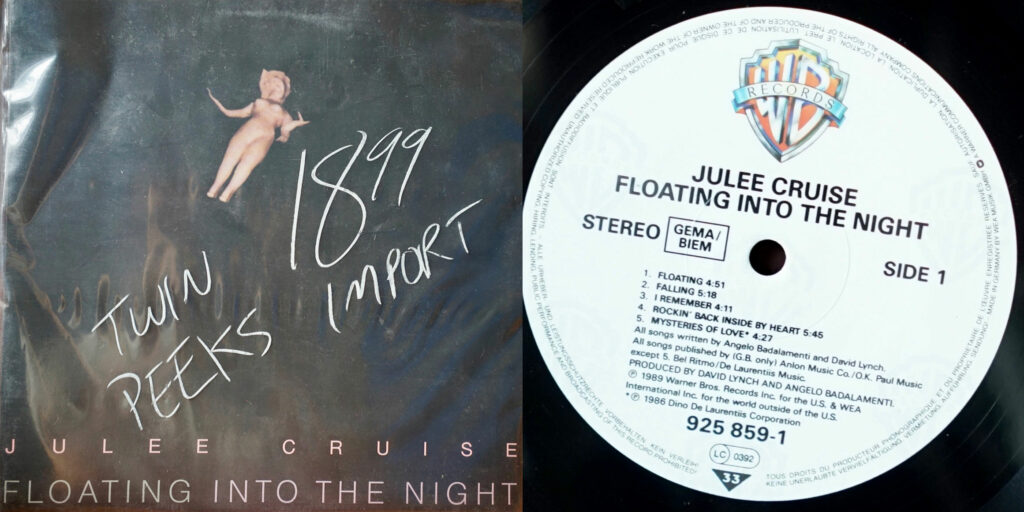
Full digital. Always a nice sounding track on digital, no different today. Of all the tracks in my LP12MF Test Tracks list, I think this might be one that I’m the least sick of listening to. (Most sick of listening to? Hmm, I really do love them all. Maybe Bill Callahan. Can is actually sort of a drag to listen to analytically rather than just having fun to.)
Full vinyl. Hmm, not getting much of a “Wow” feeling here. Things feel a little vague — even the palm mutes aren’t particularly crisp… More bass than on digital, but not as much snap as I’d like on bass. The sax breakdown is sharp and “high-bandwidth” and regains some ground. Overall, though, softer and less snappy than its best.
Slight delay. Yeah, this combo just isn’t working well on this track. The sound is decidedly vague and lacking in snap. Very pleasant and rich, with very natural tones, with the “Mober sizzle” you feel in your tummy. But a little dull on the top end, missing shimmer.
S-2-s. Sax texture definitely more lifelike, complex, “cordy” on vinyl. So much, much better than digital. But the dullness on the top end feels new to me. Whether it’s the XX-2 or the Aro or the Greenstreet, who knows. But it’s there.
Verdict: vinyl is 25% better (10% regression)
11. Can, “Halleluwah,” Tago Mago (1971)
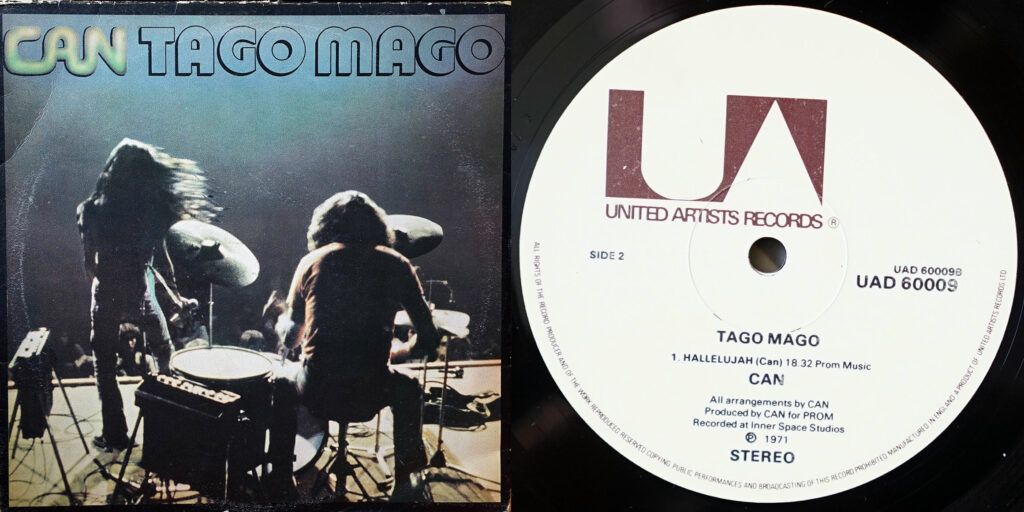
Full digital. Like last round, sound fun on digital. Plenty of punch, space, and studio trickery to focus on.
Full vinyl. Hmmm… the bass is not earth-shattering like last time. The experience is not nearly as fun or as engaging. There is a cardboardy quality to the bass this time that definitely was not there last round. The Javelin had more kick.
Slight delay. More finesse on cymbals, more space around the vocals. But the advantage on drive is lower: still big — and when things get heavy, it’s still really fun — but not at Ekos/Aro levels. Could just be because I never heard the Aro with a Troika, but I think I might actually prefer the Ekos… Definitely more bass here on vinyl, but I miss the slam and snap of the Javelin and Ekos on this track. This sounds quite a bit worse than last time. 25% now?
S-2-s. Electric guitar textures and tone are more natural — “Mober sizzle” coming through. But all in all, the gap to digital has closed a lot here. More bass, clearer presentation, better tones. But the amazing drive and (whoops, Naim) PRAT of the Javelin listening sessions has disappeared a bit.
Verdict: vinyl is 25% better (15% regression)
12. Bill Callahan, “Javelin Unlanding,” Dream River (2013)
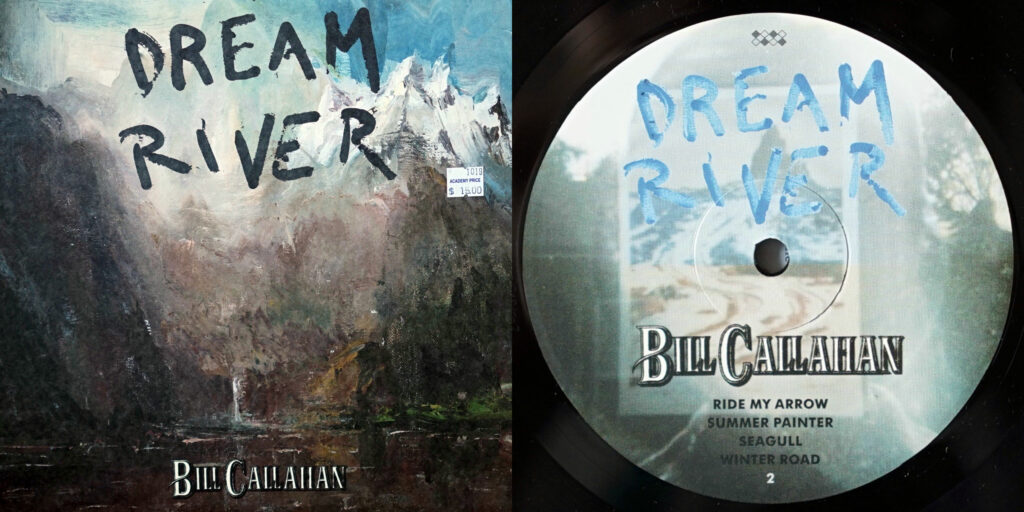
Full digital. Blech. This is definitely my least favourite test track! I like the song a lot still, but less than when I began. And I really dislike this terrible digital version. So dinky, so off, so flat and boring. Drums are flat and electric guitar is meh,
Full vinyl. Better, bit not close to as good as I’ve heard it. There is a lot more space around the hand drums, but they’re not fully separated from the blandness as they should be. Disappointing.
Slight delay. Vinyl is better than digital in the usual ways (space, texture, contrast of the lively and dead instruments), but quite a bit less than usual. 20%?
S-2-s. Yep, exactly: 20%. I wondered if it might be even less, but the space and textures really are quite far ahead on vinyl in direct comparison. But this track, like Can, was a lot better with the Javelin. I guess it makes sense that this song wouldn’t be happy on this setup. It’s not “Aro Unlanding” after all.
Verdict: vinyl is 20% better (10% regression)
Next steps
As always, I’ve already started the next comparison, which I hope is my last of the LP12MF — or close to last, anyway. I’m comparing three bearings I currently have: my three-year-old Cirkus, a brand-new Cirkus I just bought, and one of Edmund Chan’s Mober bearings. I’d love to compare them to a Karousel and a pre-Cirkus bearing, too… if I had but cash enough, and time.
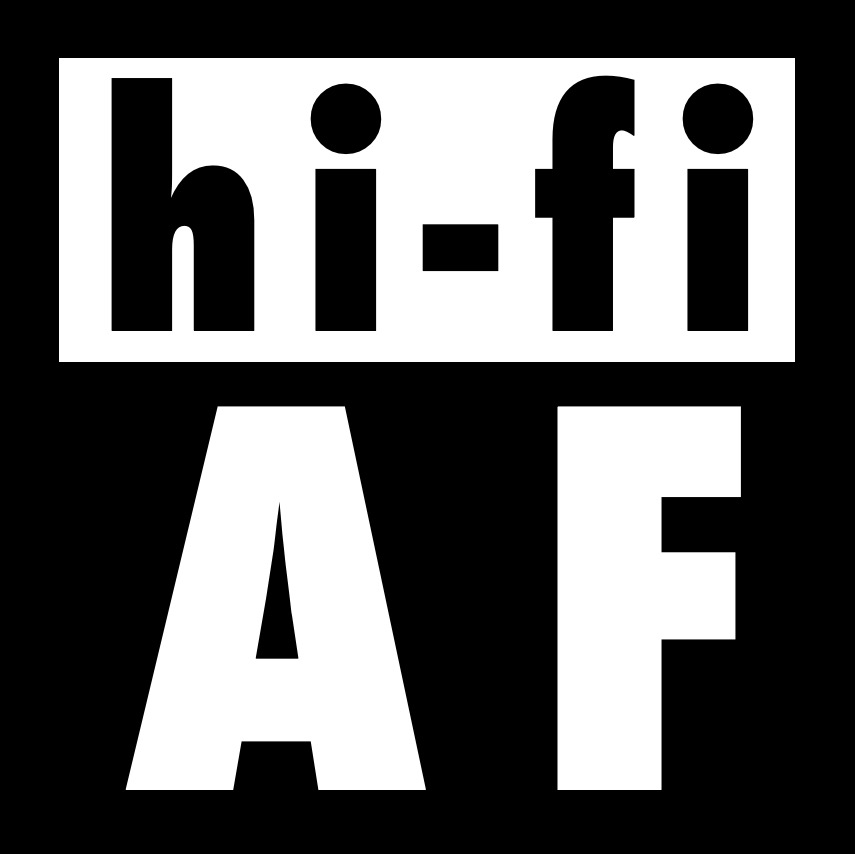
7 Comments
Join the discussion and tell us your opinion.
I recently installed a second hand Cirkus as well as the Tiger Paw Tranquility, and am very pleased. Or at least I was until I started seeing reports of the benefits of the Karousel. Gahh Its a disease. Nice one, though.
Hey Shane, I missed this. I personally highly doubt that the Karousel could sound any better than the Cirkus, or as good as the Cirkus + Tranquility. Thoughts to follow in this shortly in my next (long overdue) post!
Which Sub-chassis did you like best? The Greenstreet or the Mober?
Well, I wasn’t able to do a direct comparison (I don’t have a Mober for Aro, nor a Greenstreet for Linn), but on balance I’d say I like the Greenstreet a little better. The main difference is that the Mober has big ridges around the spring grommets, which makes it impossible (in my experience) to twist the grommets to adjust bounce. At the same time, I’ve never found I actually had to adjust the grommets to get a proper bounce, so it hasn’t really bothered me. I do slightly prefer the Mober’s bead-blasted finish over the Greenstreet’s finish, which seems to leave more fingerprints. But I don’t like the hole on the Mober’s armboard (for Ittok armrests). The Mober’s a lot cheaper, though — and the Greenstreet is about to go out of production.
Sonically, I doubt there is much or any difference.
Hi, I also use a Naim ARO on my LP12, with an ARO-Keel. The exact pivot-to-spindle distance is 210mm (not 211mm). With my DV20x2 (8.5mm centre line of mounting screws to the stylus tip) and Dr Feickert Protractor, I am 0.25mm off the Baerwald geometry, so almost spot-on. But I do not like the flat sound of the DV cartridges, like you describe in this blog. I found a NOS Denon DL-160 with a centre line of mounting screws to the stylus tip of… 8.3mm, even better. But here the output is only 1.6mV, so a step-up of 1:3 would be recommended if you like a swopping output. Compromises will always be part of this search with the perfect ARO-cartridge combination.
I am an Aro user and have been since 1995. I use a Mowber sub chassis, but have not yet upgraded to the Linn Karousel. My Aro sounds wonderful, but it is now not a standard Aro. The modification is the addition of the Tiger Paw Aro Skale, which enables extremely precise azimuth and level adjustments, as well as dispensing with the resonance inducing balancing weight and spring clip that holds the original counterweight in place. The effect of this upgrade has to be heard to be appreciated. The Aro has grace, resolution and power right across the frequency spectrum, which is exactly what you’d expect given the reduced resonance and perfect horizontal and verticle alignment with the record groove! At £200, although not cheap, it would be a very cost effective upgrade. However, it is sadly is no longer available from Tiger Paw and so you will have to scour Ebay for a used example! I also had a discussion with Peter Swain of Cymbiosis, and he told me that there is a test point on the rear of the Aro’s headshell and this is where electrical impedance is measured (test point from there too the cup, I think). If the impedance exceeds a certain value, the Aro will sound off (ordinary) and certainly not deliver the performance that it was designed to deliver, for no other reason than this! The fix is an earthing wire (the original might have detached), but is not easy. That said, I am sure now that Naim are manufacturing the revised Aro, it is possible that they have a workstation set up where they can do such repairs?! Who knows. Thanks for a great set of honest reviews.
Hi, I just fell for an ARO Keel, as an update for my old LP12-ARO rig. I am a bit nervous about this, given the age of my ARO. Should anything go wrong with my arm, I risk getting stuck with a useless Keel. Tiger Paw was supposed to produce a Keel version of their Javelin, but I suppose thid did not and will not happen. Strangely, the Tiger Paw website is still alive: Perhaps there is dome hope for a revival? In any event, in order to secure my Keel investment, I am considering buying a second ARO if I can find one. If you ever decide to sell yours, please let me know.